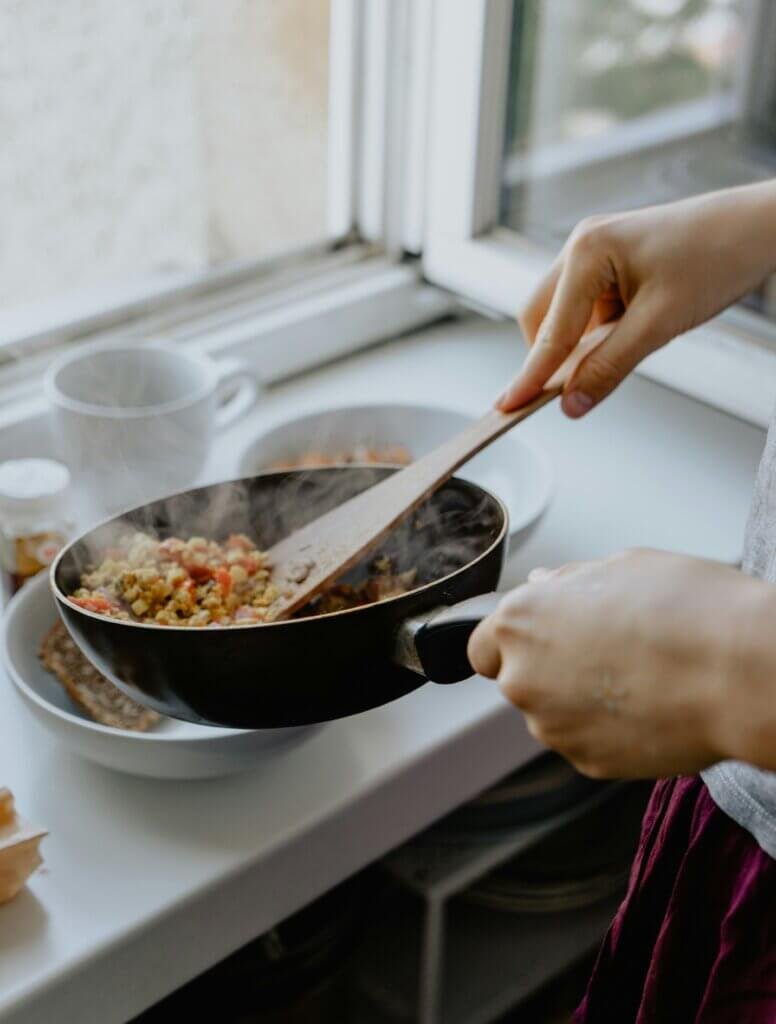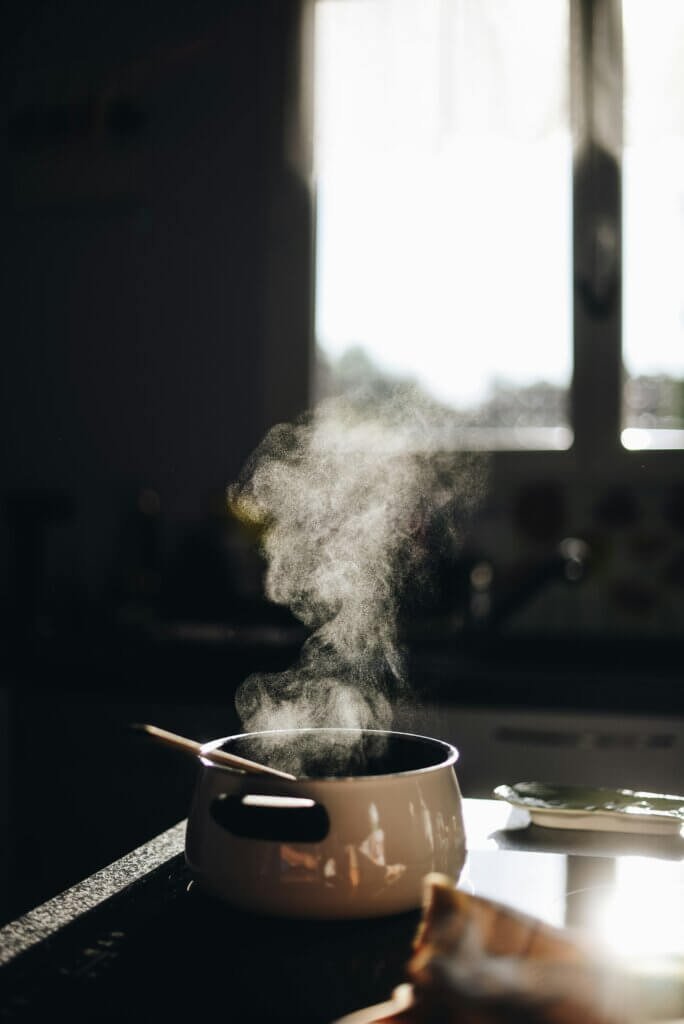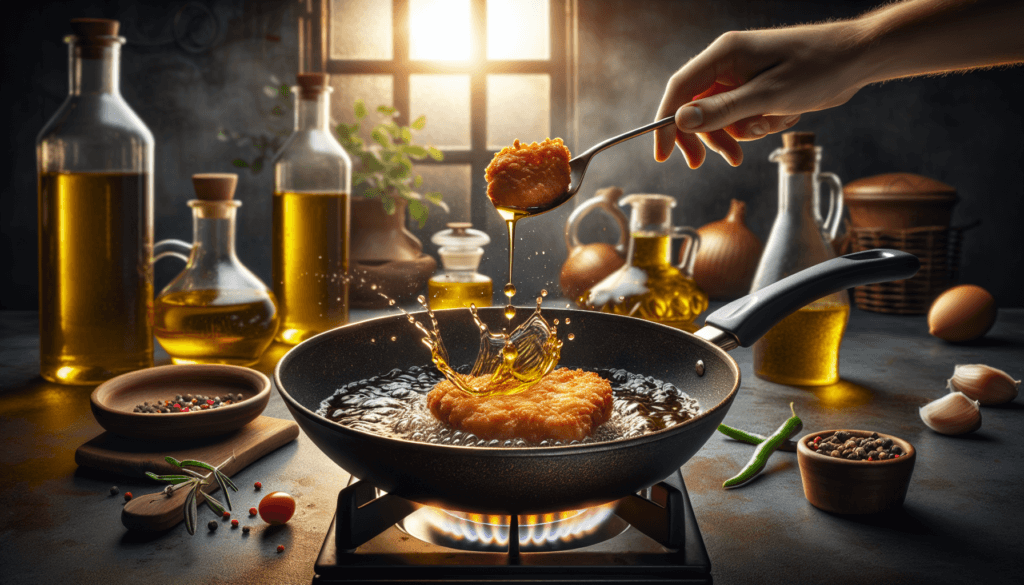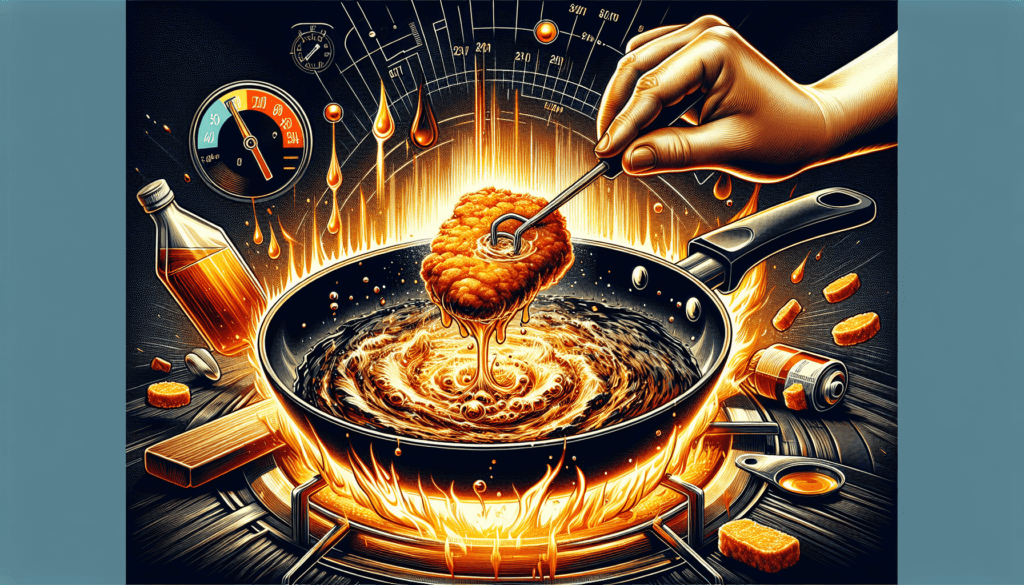If you’ve ever found yourself standing in front of a sizzling pan of oil, unsure of how to achieve the perfect crispy and golden result, then look no further. This article is here to provide you with all the essential tips you need to become a frying pro. From choosing the right oil to mastering the proper temperature and timing, we’ve got you covered. So, get ready to elevate your fried dishes to a whole new level and impress your friends and family with your frying skills. Let’s dive in!

Choosing the Right Oil
When it comes to frying, choosing the right oil is crucial for achieving the perfect result. One important factor to consider is the smoke point of the oil. The smoke point is the temperature at which the oil starts to break down and smoke, which can result in an unpleasant flavor and the formation of harmful compounds. Depending on what you’re frying, you’ll want to select an oil with a smoke point that is suitable for the heat you’ll be using.
In addition to smoke point, you should also consider the flavor of the oil. Some oils have a strong taste that can affect the overall flavor of your dish, so if you’re looking for a neutral taste, opt for oils that have a mild or neutral flavor.
Another aspect to consider is the heat stability of the oil. Some oils can withstand high heat without breaking down, while others are better suited for low-heat cooking. If you’re planning on deep frying at high temperatures, make sure to choose an oil that has high heat stability.
Preheating the Oil
Before you start frying, it’s important to properly preheat the oil. This allows the food to cook evenly and prevents it from becoming greasy. To ensure your oil is at the right temperature, give it ample time to heat up before adding the food.
To monitor the temperature of the oil, using a deep-fry thermometer is highly recommended. This will give you an accurate reading and ensure that the oil is not too hot or too cold. Maintaining the correct temperature throughout the frying process is crucial for achieving crispy and golden results.

Maintaining the Right Temperature
Maintaining the right temperature while frying is essential for achieving perfect results. One common mistake is overcrowding the pan, as this can cause the temperature of the oil to drop significantly. It’s important to fry in small batches, allowing enough space for the food to cook evenly.
Adjusting the heat as needed is also crucial. If the oil is too hot, your food may burn on the outside while remaining undercooked on the inside. On the other hand, if the temperature is too low, the food may become greasy. Keep an eye on the heat and make adjustments accordingly to ensure your food cooks evenly and to perfection.
Fluctuations in temperature can also lead to less-than-ideal results. Rapid changes in temperature can cause the food to absorb more oil, resulting in greasy fried food. Make sure to maintain a steady heat to prevent temperature fluctuations and achieve crispy, golden results.
Preparing the Food
Properly preparing the food before frying is another important step in achieving perfect fried dishes. First, make sure to pat dry any ingredients that have excess moisture. This is especially important for foods that have been washed or have a higher water content, as excess moisture can cause the oil to splatter.
In addition to patting dry, it’s also important to remove any excess moisture from the food. This can be done by using a paper towel or allowing the food to air-dry for a few minutes. Removing excess moisture helps prevent the food from becoming soggy and ensures a crisp exterior.
Depending on the recipe, you may also want to dredge or coat the food before frying. This can add an extra layer of flavor and help the food develop a crispy crust. Whether you’re using breadcrumbs, flour, or a batter, make sure to follow the recipe instructions to achieve the desired result.

Proper Frying Technique
When it comes to frying, using the proper technique can make all the difference in the final outcome of your dish. One important tip is to fully submerge the food in the oil. This ensures even cooking and helps to achieve a crispy exterior. Always use tongs or a slotted spoon to carefully place the food into the hot oil, avoiding any contact with your hands.
While frying, it’s important to resist the temptation to touch or flip the food too often with utensils. This can disrupt the cooking process and prevent the food from cooking evenly. Instead, allow the food to cook undisturbed until it reaches the desired level of crispiness, and then carefully flip it over if necessary.
Frying in small batches is another crucial technique to keep in mind. Overcrowding the pan can cause the temperature of the oil to drop, resulting in greasy and unevenly cooked food. By frying in small batches, you ensure that the food has enough space to cook evenly and develop a crispy texture.
Watching the Cook Time
Properly monitoring the cook time is key to achieving perfectly fried dishes. Using a timer can help you keep track of how long the food has been in the oil and ensure that it doesn’t overcook. Different foods require different cook times, so make sure to follow the recipe guidelines or use your own judgment based on the desired level of crispiness.
In addition to using a timer, it’s important to pay attention to color changes. As the food fries, it will gradually turn golden brown, indicating that it is ready to be removed from the oil. However, be careful not to let it become too dark, as this can result in a bitter or burnt flavor. Keep a close eye on the color changes to achieve the perfect balance of crispiness and flavor.
Avoiding overcooking is crucial for maintaining the texture and flavor of your fried food. Overcooking can result in dry and tough dishes, so make sure to remove the food from the oil as soon as it reaches the desired level of doneness.

Draining and Resting
After frying, it’s important to properly drain the excess oil from the food. Using a wire rack or paper towels can help remove the excess oil and prevent the food from becoming greasy. Place the fried food on a wire rack or pat it dry with paper towels, allowing any excess oil to drip off.
Resting the fried food is also important before serving. This allows the flavors to meld and the excess moisture to evaporate, resulting in a more enjoyable eating experience. Resting the food for a few minutes also helps to retain its crispiness.
Avoiding Greasy Results
To avoid greasy results, it’s important to ensure that the oil is at the proper temperature. If the oil is too cool, the food will absorb more oil, resulting in a greasy texture. On the other hand, if the oil is too hot, the food may cook too quickly on the outside and remain undercooked on the inside. Use a deep-fry thermometer to accurately monitor the temperature of the oil and adjust the heat as needed.
Using a slotted spoon or spider strainer is another helpful tip for avoiding greasy fried food. These tools allow you to drain the excess oil from the food before transferring it to a plate or serving dish. By removing the excess oil, you can achieve a lighter and more enjoyable fried dish.
Properly draining the fried food is crucial for avoiding greasy results. After removing the food from the oil, place it on a wire rack or paper towels to allow any excess oil to drain off. This will help maintain the desired texture and prevent the final dish from becoming heavy and greasy.

Seasoning Immediately
For the best flavor, it’s ideal to season your fried food immediately after it comes out of the oil. The heat from the fried food will help the seasoning to adhere, resulting in a more flavorful end result. Sprinkle salt or any other desired seasonings over the hot food, or toss the food in seasonings while it’s still hot to evenly distribute the flavors.
By seasoning the food while it’s hot, you ensure that each bite is packed with flavor. The heat helps to enhance the flavors of the seasonings and allows them to meld with the crispy exterior of the fried food. Don’t be afraid to get creative with your seasonings and experiment with different combinations to find your perfect flavor profile.
Creative Tips for Flavor
If you’re looking to add an extra punch of flavor to your fried dishes, there are a few creative tips you can try. Experimenting with different spices can enhance the taste of your fried food. Whether it’s adding a hint of cayenne pepper for some heat or tossing your food with a blend of aromatic spices, don’t be afraid to get adventurous with your flavorings.
Infusing oil with herbs or aromatics is another way to elevate the flavor of your fried dishes. Simply heat the oil with your chosen herbs or aromatics, such as garlic cloves or rosemary sprigs, and then strain the oil before using it for frying. This technique adds subtle yet distinctive flavors to your dishes and can take your fried food to the next level.
Lastly, using flavored salts or seasonings can add a unique twist to your fried dishes. From truffle salt to smoked paprika, there are endless options to explore. Sprinkle these flavored salts or seasonings over your fried food immediately after frying, or mix them into a dipping sauce for an extra layer of flavor.
Perfecting your frying technique takes a combination of selecting the right oil, properly preheating the oil, maintaining the right temperature, preparing the food, using the proper frying technique, watching the cook time, draining and resting the food, avoiding greasy results, seasoning immediately, and getting creative with different flavors. By following these essential tips, you’ll be well on your way to achieving perfectly fried dishes every time. So grab your favorite frying pan, heat up some oil, and get ready to impress your family and friends with your newfound frying skills!


